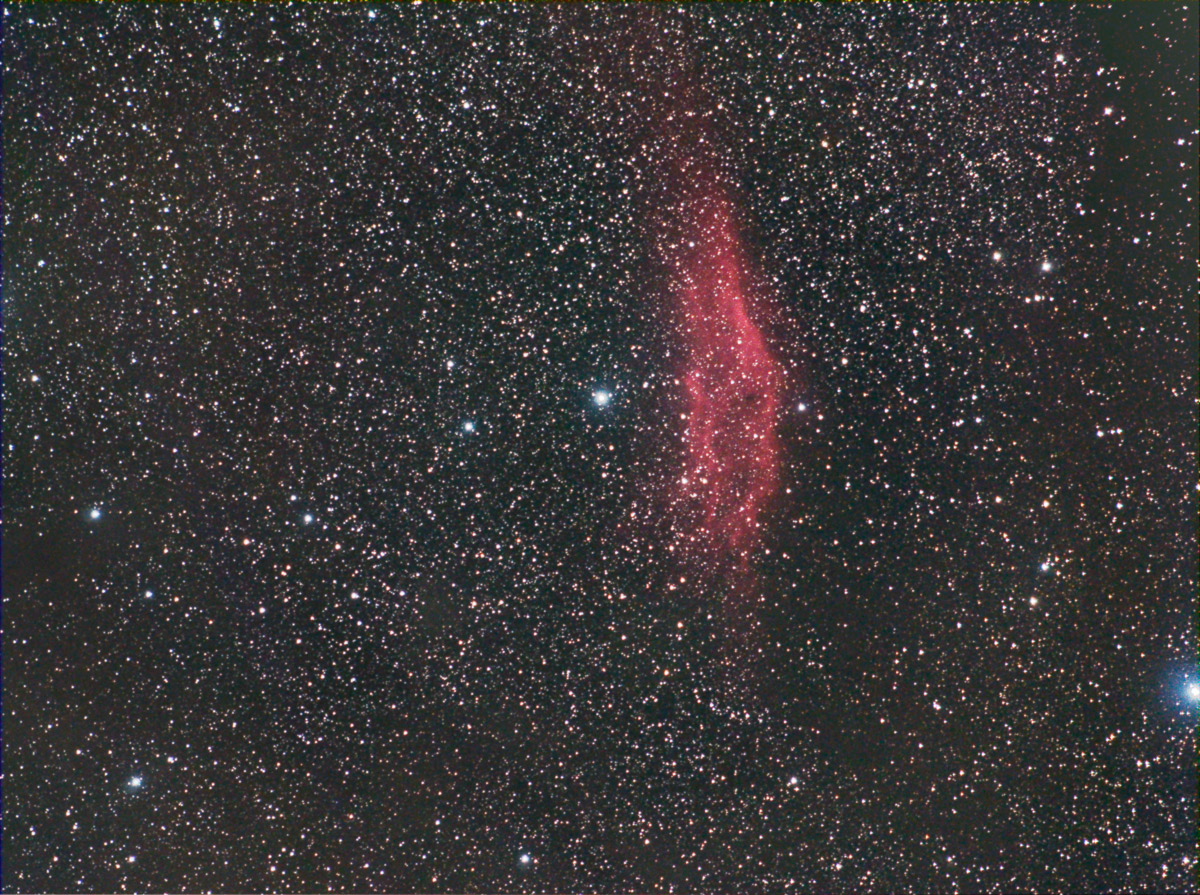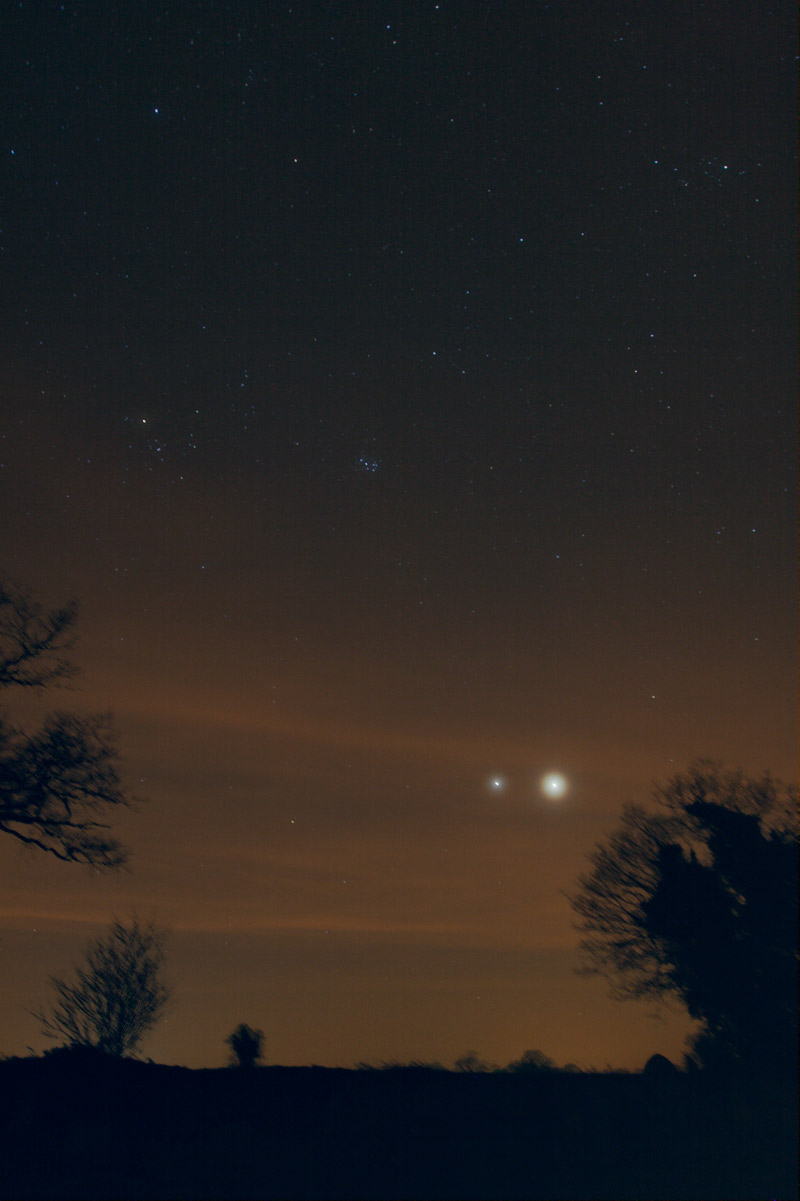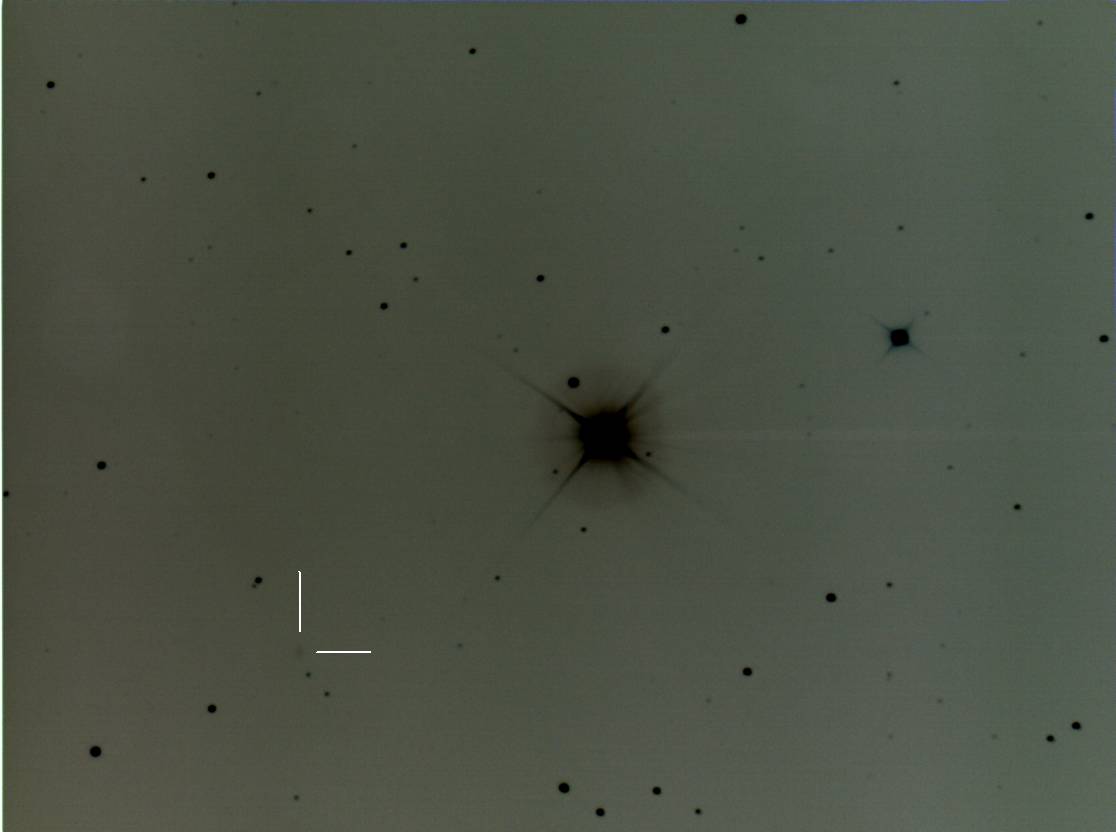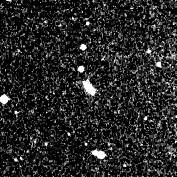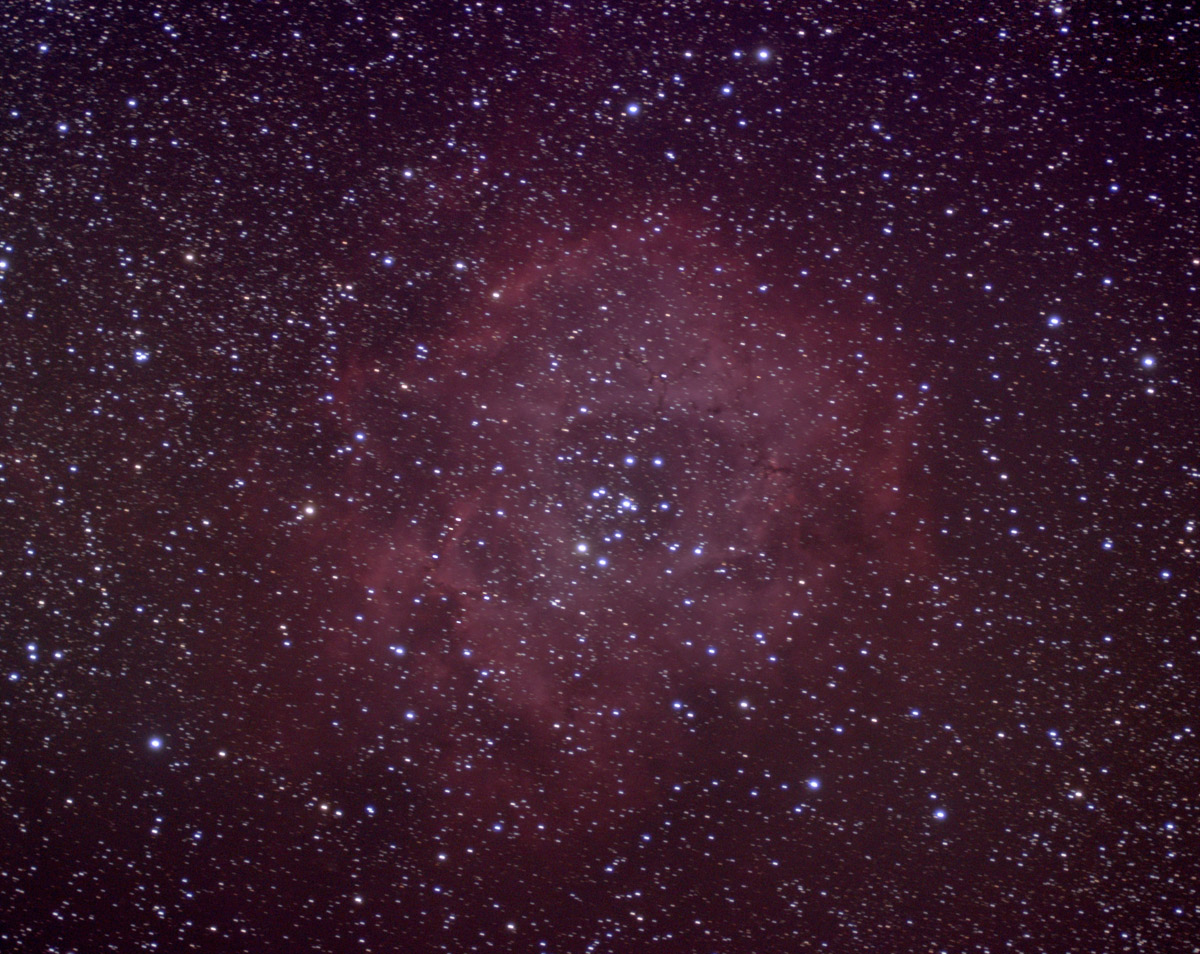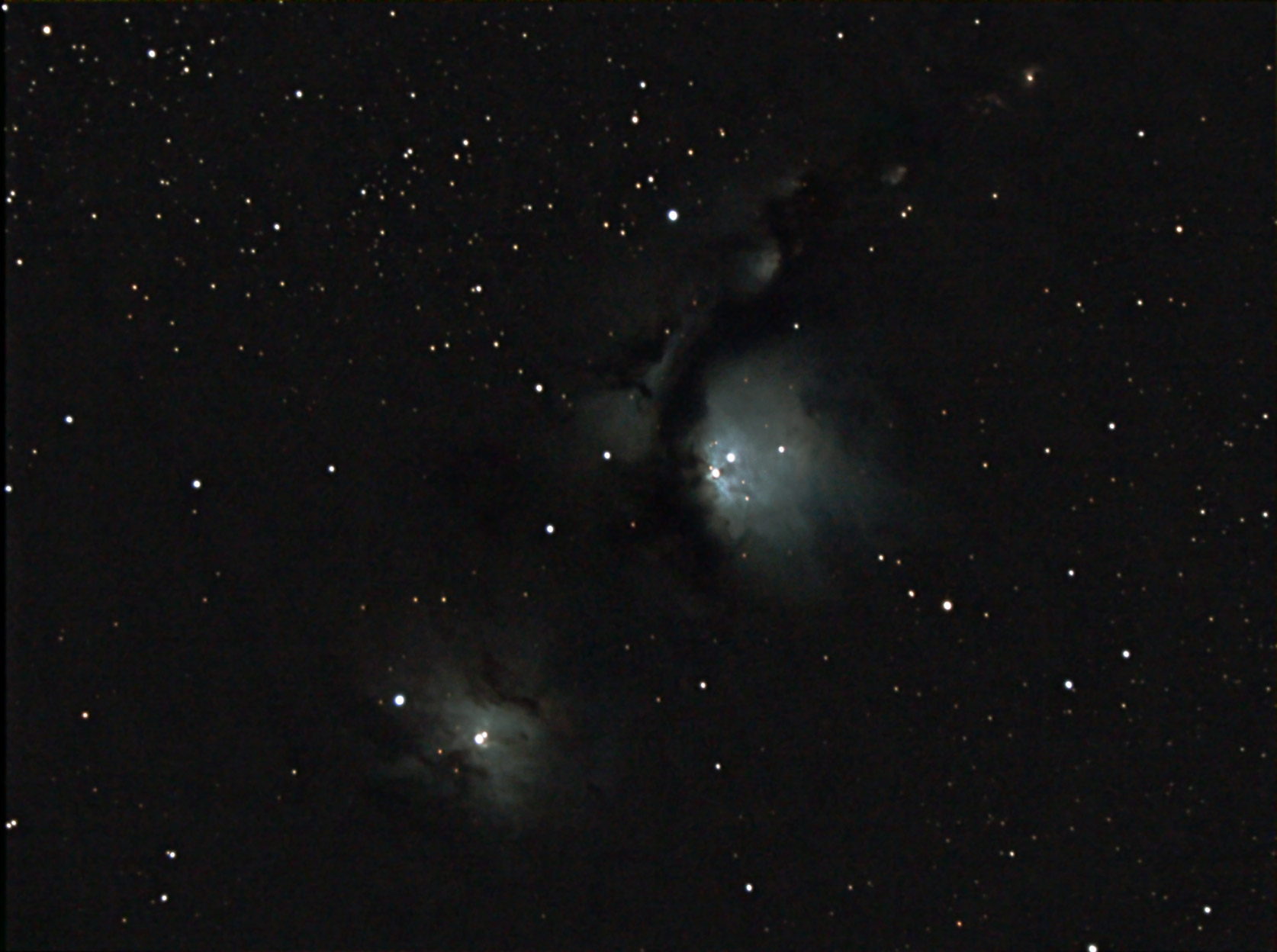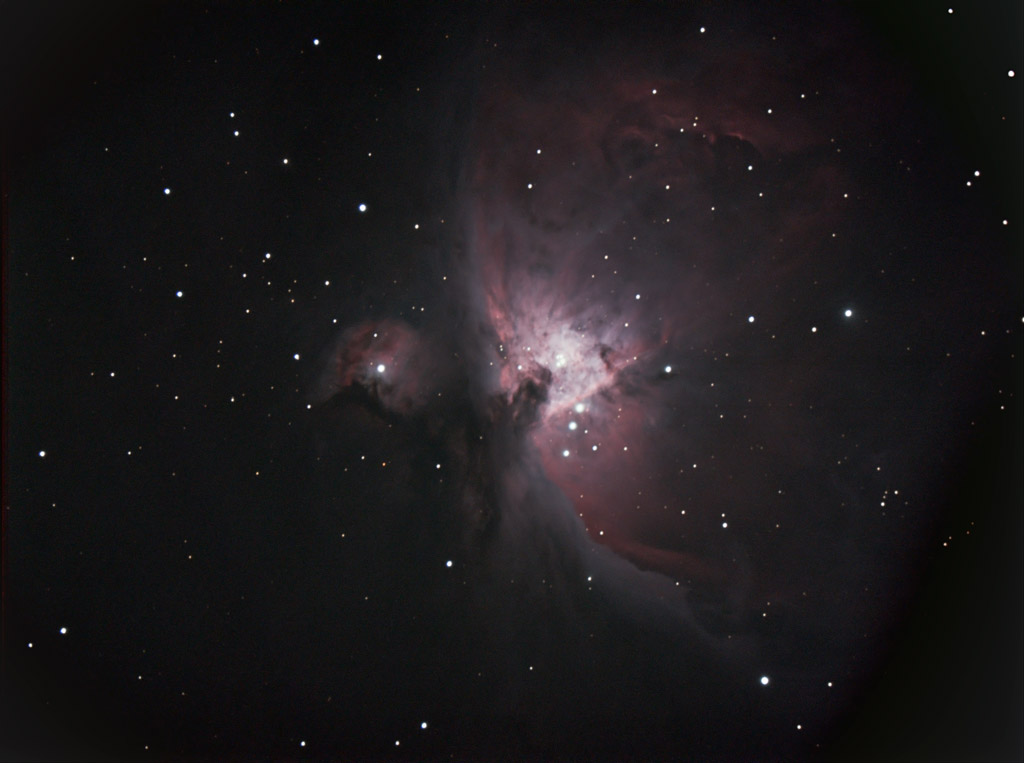Galaxy clusters are amongst the largest structures in the observable universe. Local clusters include the Local Group (including the Milky Way and Andromeda galaxies), the M81 group (11 million light years), M101 group (24 million light years) and Virgo Cluster (65 million light years).
Rather further away is the Abell 2065 cluster which is somewhere between 1 and 1.5 billion light years away and located in the constellation Corona Borealis. With the exception of a sprinkling of bright foreground stars most of the objects in this image are galaxies with the brightest members a diminutive magnitude 16.5.
This image is a stack of 10 1 minute exposure on the 20″ taken with the Atik 383L.

